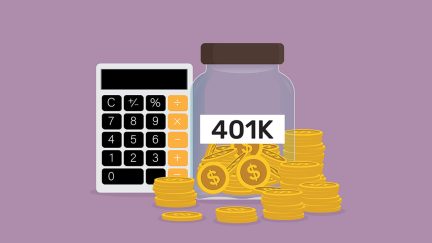Get more! Sign up for PLANSPONSOR newsletters.
Survey Finds Retirees and Pre-Retirees Faring Well
The results of “First Look: Assessing the New Retiree Experience,” by investment management provider T. Rowe Price, reveal employees in their 50s who are participating in an employer-sponsored 401(k) have accumulated significant assets, but feel more anxious about retirement than those who have already retired.
How Retirees Are Doing
Many retirees have considerable savings, according the survey. Recent retirees report median household assets (i.e., investable assets plus home equity minus debt) of $473,000, with 48% having $500,000 or more in household assets.
Of their investable assets, 38% was in stocks and stock mutual funds, 13% was in asset allocation mutual funds, and 31% was held in cash. More than eight in 10 (82%) of the retirees surveyed own real estate with a median of $191,000 in home equity.
“For workers approaching retirement, we know there is anxiety and uncertainty as they look ahead and think they can’t possibly be prepared for retirement. But this survey demonstrates that you can do it,” says Aimee DeCamillo, head of T. Rowe Price Retirement Plan Services, based in Baltimore. “Many people are successfully saving in the private retirement system, and they report that post transition [into retirement], they are fine.”
Social Security accounts for the largest portion of respondents’ income. Specifically, the survey finds that 43% of their income came from Social Security. The second largest source came from traditional defined benefit plans (19%), followed by amounts withdrawn from personal savings and investment accounts including individual retirement accounts (IRAs) and defined contribution plans (18%).
“Plan sponsors need to emphasize the important role Social Security plays as the foundation of retirement income for most American households and the strategic advantages of delaying Social Security benefits,” says DeCamillo.
Among retired respondents, the survey also finds:
- Work is part of the picture. Retirees are working either part-time (16%) or full-time (4%). Another 14% are retired but looking for work.
- Those with a withdrawal plan are withdrawing close to 4% of their assets annually. Nearly half (48%) of retirees have a withdrawal plan, and the median retirement withdrawal among them was 4% of their investable assets within the past 12 months. Outside of this average, nearly one-quarter of retirees withdrew 8% or more, and more than one-quarter withdrew only 1%.
- Living on less. Nearly three years into retirement, retirees report living on 66% of their pre-retirement income on average.
- Living on less doesn’t mean dissatisfaction with their lifestyle. More than half (57%) of retirees surveyed live as well, or better than, when they were working. And 85% agree that they do not need to spend as much as they did before they retired to be satisfied, with 37% saying this describes them a great deal. Most respondents (65%) like not spending as much and see it as a new found freedom from “keeping up with the Joneses,” with 25% saying this describes them a great deal.
- They feel satisfied. The majority of respondents (89%) are somewhat or very satisfied with retirement so far. Additionally, 74% say they are somewhat or much better off financially compared with how their parents lived at the same age.
- Most are flexible. Sixty percent of retirees would rather adjust their spending up and down depending on the market to maintain the value of their portfolio rather than maintain the same level of spending year after year, at the expense of potentially diminishing their portfolio.
The survey does find that there are exceptions and that not everyone is well off. For example, households of retirees who are not married or living with a partner are not doing as well as their married counterparts, both financially and emotionally. And women represent a greater proportion of single households than men, with 48% of women residing in single households compared with 26% of men.
Single households have only a median of $248,000 in investable assets plus home equity minus debt combined (compared with $731,000 for married households). They are more likely to be looking for work (19% vs. 11%), a higher proportion are finding it difficult to live without their pre-retirement paycheck (36% vs. 27%), more believe that they will run out of money (19% vs. 11%), and fewer are “very satisfied” with their retirement experience (37% vs. 48%).
Employees Age 50 and Older
Employees age 50 and older who are still working are more anxious about retirement than their retired counterparts. The survey finds a greater percentage of employees believe they will have to reduce their standard of living compared with the retirees (49% vs. 35%). They also believe they will run out of money (22% vs. 14%) and will be less likely to have enough money to pay for health care (49% vs. 70%).
Despite this mindset, the survey finds most employees age 50 and older have considerable savings, having median household assets (i.e., investable assets plus home equity minus debt) of $465,000. They are invested less conservatively than their retired counterparts, with 47% of their investable assets in stocks or stock mutual funds, 13% in asset allocation funds, and 23% in cash. A large number of them (81%) own real estate, with a median of $171,000 in home equity.
For this age group, the survey also finds:
- They do not plan to use home equity to generate retirement income. Sixty percent do not plan to tap their home equity at all for retirement income, and only 11% plan to use more than half of their home equity.
- High savings rates. The median personal deferral rate into their retirement plans is 10%, not counting any match that they may receive from their employer.
- Confidence that they will save enough. The median minimum they would like to save is $693,000 before they retire, and 61% are confident they will hit that number.
- They expect to work longer and have considered delaying retirement. On average, they expect to retire at age 68. Additionally, 43% have considered delaying retirement in the last 12 months.
- Social Security can be delayed. Eighty percent intend to wait until at least their full retirement age (age 66) to begin collecting Social Security benefits, with 34% willing to take the maximum benefit at age 70. Only 20% indicated their intent to collect Social Security benefits as soon as they become eligible (age 62).
Job security is a concern. Twenty-nine percent of employees age 50 and older are somewhat or very concerned they may lose their jobs in the next 12 months, according to the survey.
The survey was conducted during February and March. It is based on a national sample of 1,507 retirees who have been in retirement for one to five years and have a rollover IRA or an account balance in their 401(k) plan. It also includes a second sample of 1,030 workers, age 50 and older, who are currently contributing to a 401(k) plan or are eligible to contribute and have a balance of at least $1,000.
Highlights of the survey results can be found here.


